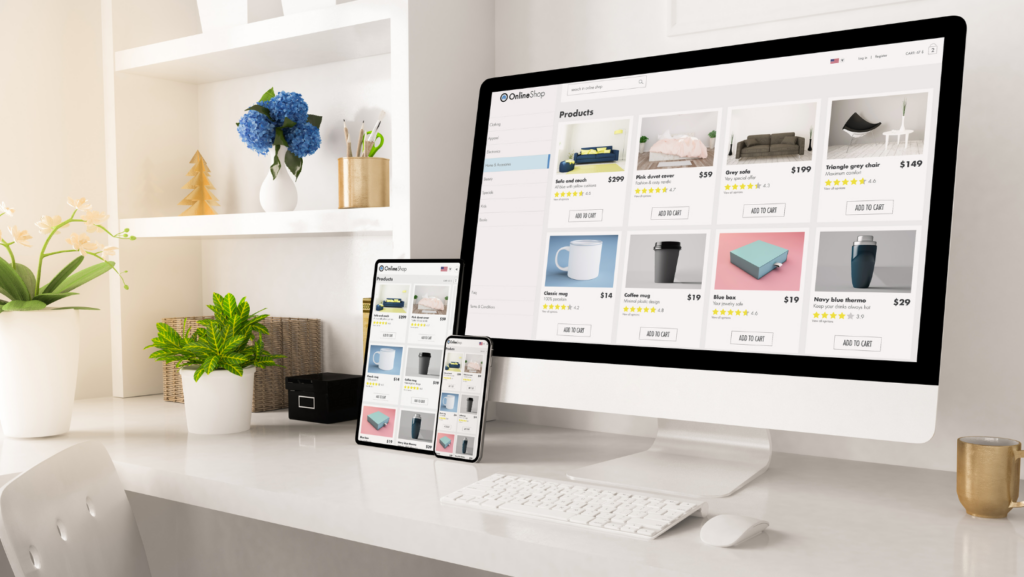In the digital era, shopping has taken a dramatic turn. No longer confined to the traditional brick-and-mortar stores, consumers are now turning to online platforms for their shopping needs. But there’s a twist: a significant chunk of this online shopping doesn’t occur during the usual business hours.
Indeed, the shopping habits of online consumers differ greatly from those who frequent retail stores. They’re not just shopping more – they’re shopping differently, often during unconventional hours. This article will delve into why this happens and how it’s reshaping the retail landscape. Stay tuned as we uncover the unique dynamics of online shopping and what it means for the future of retail.
Online Shopping Differs From Retail Shopping – Let’s Find Out Why
 The journey from bustling marketplaces to a few clicks on a device showcases the monumental shift in shopping trends. Let’s delve deeper into this evolution, focusing on the surge of online shopping and the transformation of retail shopping.
The journey from bustling marketplaces to a few clicks on a device showcases the monumental shift in shopping trends. Let’s delve deeper into this evolution, focusing on the surge of online shopping and the transformation of retail shopping.
Online shopping differs from retail shopping because a larger percentage of it happens during the and has seen a remarkable upswing, fortified by the affordability of internet access, the prevalence of digital devices, and the convenience factor. In 2000, a mere 22% of U.S. adults were e-commerce consumers, but by 2020, that figure had surged to 79% according to the Pew Research Center. The nighttime sees a particularly significant spike with 43% of online shopping occurring between 8 PM and 8 AM, reflecting the capacity of online shopping to fit into consumers’ lifestyles regardless of the hour.
Decline and Transformation of Retail Shopping
Brick-and-mortar stores, contrastingly, have experienced dwindling footfall and sales. The Census Bureau reports that department store sales fell by 45% over the last two decades, confirming the apparent decline. Yet, retail isn’t bowing out but transforming instead.
A stratagem often observed is the blending of online and offline capabilities, such as “click-and-collect” services. Retailers also strive to provide enriched in-store experiences, realizing that tactile engagement, instant gratification, and personalized service are factors that online shopping can’t replicate as effectively.
Key Factors That Differentiate Online and Retail Shopping
 Addressing distinct aspects, online shopping differs from retail shopping because a larger percentage of it happens during the presents unique features. These key factors, drawn from buyer’s behaviours and market demands, help to outline the character of both shopping methods.
Addressing distinct aspects, online shopping differs from retail shopping because a larger percentage of it happens during the presents unique features. These key factors, drawn from buyer’s behaviours and market demands, help to outline the character of both shopping methods.
In terms of convenience, online shopping takes the lead. No geographical boundaries limit online shoppers. They’re free to access products from different countries, and industries with just a mouse click. Conversely, retail shopping is geographically confined, meaning a customer must travel to the store location to make a purchase. In this platform, accessibility might be limited based on the store’s stock, location, and physical capacity.
Operating Hours and Peak Shopping Times
Operating hours exhibit significant differences between online and retail shopping. Online platforms operate 24/7, allowing customers to make purchases at any hour. Key statistics support the fact that a large percentage of online shopping happens late-night. On the other hand, retail shops function on set opening and closing hours, often restricted by local trading laws or the business’ operational decisions. Peak shopping times for retail stores typically align with weekends and after-work hours, unlike online shopping that sees high traffic in the late evenings and early mornings.
Consumer Behavior in Online Shopping
 Moving through the web of online shopping uncovers numerous shifts in consumer behavior, fueled by the ever-growing digital environment. This segment dissects how digital platforms influence purchasing decisions and modify traditional shopping patterns.
Moving through the web of online shopping uncovers numerous shifts in consumer behavior, fueled by the ever-growing digital environment. This segment dissects how digital platforms influence purchasing decisions and modify traditional shopping patterns.
Online shopping platforms excel in triggering impulsive purchases. Digital channels cleverly deploy targeted advertising and personalized recommendations, leading to a rise in unplanned buying. For instance, on platforms like Amazon and eBay, “You may also like” suggestions often lead to impulsive additions to shopping carts. Coupled with simplification of the checkout process, these tactics skyrocket the likelihood of impulse buying compared to retail stores.
Shift in Shopping Hours and Peak Periods
Online shopping also introduces changes in shopping hours and peak periods because online shopping differs from retail shopping because a larger percentage of it happens during the. Digital platforms, uninhibited by physical store hours, witness increases in shopper interactions at unconventional hours.
For instance, studies reveal active shopping traffic between 8 PM to 12 AM, likely reflecting the convenience of shopping from the comfort of one’s couch after a day’s work. This dramatic shift upends the typical peak shopping hours associated with brick-and-mortar stores, symbolizing the evolving dynamics of consumer behavior in the digital age.

